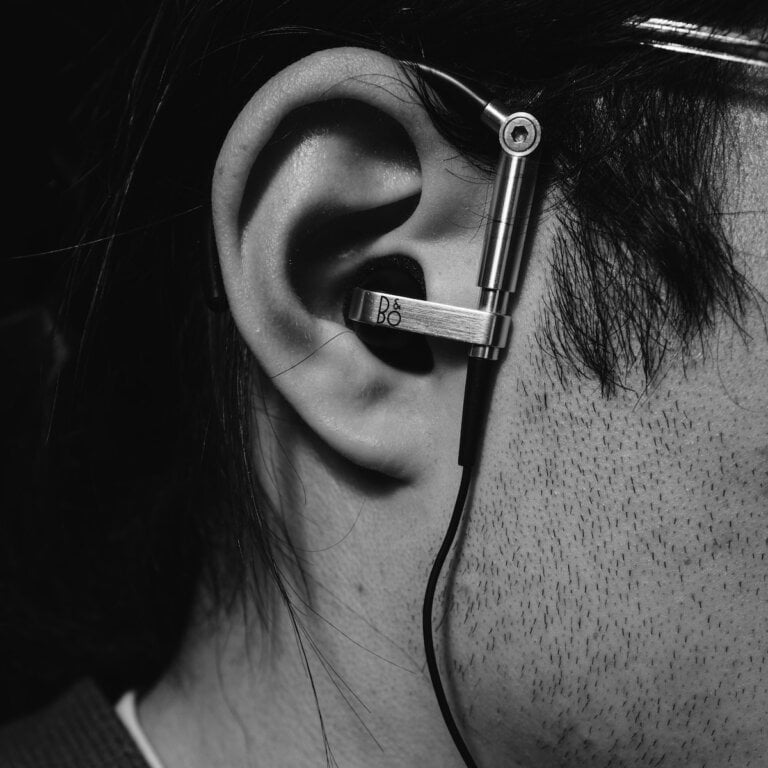Battling Ear Infections: A Comprehensive Guide to Treatment Options
Last Updated on 25th April 2024 by Admin
Ear infections can be a painful and frustrating condition to deal with, affecting both children and adults alike. Understanding the causes, symptoms, and available treatment options is crucial in effectively managing and alleviating this common health issue. In this comprehensive guide, we will explore various treatment options for ear infections to help you make informed decisions regarding your healthcare.
What is an Ear Infection?
An ear infection, also known as otitis media, is an inflammation or infection of the middle ear, which is the space behind the eardrum. It occurs when bacteria or viruses enter the ear and multiply, leading to discomfort and possible complications if left untreated. Common symptoms of an ear infection include:
- Ear pain or discomfort: Ear infections can cause sharp, throbbing, or dull pain in the affected ear. The pain may become worse when lying down or chewing.
- Hearing loss or difficulty hearing: The buildup of fluid in the middle ear can affect sound conduction, resulting in temporary hearing loss or muffled sounds.
- Fluid drainage from the ear: Some ear infections may cause fluid to drain from the affected ear. The fluid may be clear, yellow, or bloody.
- Fever: Infections often trigger a fever, which can be a sign that the body is fighting off the infection.
- Irritability (in children): Infants and young children may become fussy, irritable, or have trouble sleeping due to the discomfort caused by an ear infection.
Types of Ear Infections
There are several types of ear infections, each with its own characteristics and causes. The most common types include:
-
Acute Otitis Media (AOM): This is the most typical form of ear infection, often occurring as a result of a cold or respiratory infection. AOM causes sudden onset ear pain and inflammation. It can affect individuals of all ages, but is most common in young children due to their underdeveloped immune systems and shorter, more horizontal Eustachian tubes.
-
Chronic Otitis Media with Effusion (COME): COME is characterized by persistent fluid buildup in the middle ear without acute infection. It commonly occurs after a previous ear infection or allergic reaction. This condition may cause hearing loss, a feeling of fullness in the ear, and occasional mild discomfort. COME is more prevalent in children, but can also affect adults, especially those with allergies or structural abnormalities in the Eustachian tubes.
-
Otitis Externa: Also known as swimmer’s ear, otitis externa affects the outer ear and ear canal. It is often caused by water trapped in the ear, leading to bacterial or fungal growth. Symptoms of otitis externa include ear pain, itching, redness, and swelling of the ear canal. This type of infection is commonly seen in swimmers, hence the name swimmer’s ear, but can also occur due to excessive moisture or trauma to the ear canal.
Treatment Options for Ear Infections
The appropriate treatment for an ear infection depends on the type, severity, and individual patient factors. Here are some common treatment options:
1. Watchful Waiting
In many cases, particularly for uncomplicated ear infections, a healthcare provider may recommend watchful waiting. This approach involves closely monitoring the symptoms without immediate medical intervention. Watchful waiting is often suggested for mild cases or when symptoms are improving on their own. However, close follow-up is essential to ensure the infection resolves and to prevent complications.
During the watchful waiting period, it is important to manage pain and discomfort using over-the-counter pain relievers like acetaminophen or ibuprofen. These medications can help alleviate ear pain and reduce fever. It is crucial to follow the recommended dosage and consult a healthcare professional if symptoms persist or worsen.
2. Pain Relief Medication
To alleviate discomfort associated with an ear infection, over-the-counter pain relievers such as acetaminophen or ibuprofen can be used. These medications help reduce pain and fever, providing temporary relief while the body fights off the infection. It is crucial to follow the recommended dosage and consult a healthcare professional if symptoms persist or worsen.
In addition to pain relief medication, applying a warm compress to the affected ear can help soothe pain and reduce inflammation. The warmth from the compress can increase blood circulation to the area, promoting healing.
3. Antibiotics
Antibiotics are commonly prescribed to treat bacterial ear infections, particularly in cases of acute otitis media where symptoms are severe or persistent. They help eliminate the bacterial infection and reduce inflammation. It is essential to complete the full course of antibiotics as prescribed by the healthcare provider to ensure effective treatment and prevent antibiotic resistance.
Before prescribing antibiotics, healthcare providers may consider factors such as the patient’s age, severity of symptoms, and risk of complications. If the infection is not improving after a few days of antibiotic treatment, it is important to seek medical attention to reassess the diagnosis and consider alternative treatment options.
4. Ear Drops
For certain types of ear infections, such as otitis externa or chronic otitis media with effusion, ear drops may be recommended. These drops typically contain antibiotics, antifungal agents, or steroids to target the underlying cause of the infection and reduce inflammation. It is crucial to follow the instructions on proper application and duration of use.
When using ear drops, it is important to ensure that the affected ear is clean and dry before administration. Gently pull the earlobe to straighten the ear canal and instill the prescribed number of drops. After applying the drops, keep the head tilted for a few minutes to allow the medication to reach deep into the ear canal. Avoid inserting cotton swabs or any other objects into the ear, as it may further irritate the infection.
5. Surgical Intervention
In some cases of chronic or recurrent ear infections, surgical intervention may be necessary. Tympanostomy tubes, also known as ear tubes, can be inserted through a minor surgical procedure to improve ventilation in the middle ear and prevent fluid accumulation. This procedure is often recommended for individuals with frequent ear infections or persistent fluid buildup.
Tympanostomy tubes are small, hollow tubes that are placed in the eardrum to equalize pressure and allow fluid to drain from the middle ear. The tubes typically fall out on their own after a few months to a year. The surgical insertion of ear tubes is a relatively safe and effective procedure that can provide long-lasting relief for individuals with chronic ear infections.
Prevention and Management Tips
While ear infections can be challenging to prevent entirely, certain measures can help reduce the risk and manage the condition effectively. Consider the following tips:
- Encourage proper hand hygiene to minimize the spread of germs. Regularly washing hands with soap and water, especially before touching the face or ears, can help prevent infections.
- Avoid exposure to secondhand smoke as it increases the risk of ear infections. Smoke irritates the lining of the nose and throat, making it easier for bacteria or viruses to enter the middle ear.
- Breastfeed infants if possible, as breast milk provides antibodies that can help strengthen the immune system. Breastfeeding for at least six months has been associated with a reduced risk of ear infections in infants.
- Ensure timely and appropriate vaccinations, as some vaccines can protect against certain bacterial infections that cause ear infections. Vaccines like the pneumococcal conjugate vaccine (PCV) and the Haemophilus influenzae type b (Hib) vaccine can help prevent bacterial ear infections.
- Promptly treat respiratory infections and allergies to minimize the risk of developing ear infections. Proper management of conditions like colds, sinusitis, and allergies can help reduce inflammation and prevent the spread of infection to the ears.
- Teach children to avoid inserting objects into their ears, as this can introduce bacteria and cause damage. Discourage the use of cotton swabs, bobby pins, or other objects that may push wax deeper into the ear canal or cause injury.
Conclusion
Battling ear infections can be a challenging and uncomfortable experience, but with the right knowledge and treatment options, relief is possible. From watchful waiting to medication and surgical interventions, various approaches can effectively manage ear infections. Remember to consult a healthcare professional for accurate diagnosis and personalized treatment recommendations. By following prevention tips and promptly managing ear infections, you can protect your hearing and overall well-being.
This comprehensive guide provides valuable information on the causes, symptoms, and treatment options for ear infections. It is essential to consult a healthcare professional for accurate diagnosis and personalized advice. The information provided should not be used as a substitute for professional medical care or advice.
FAQ
Q: What is an ear infection?
A: An ear infection, also known as otitis media, is an inflammation or infection of the middle ear caused by bacteria or viruses entering the ear and multiplying. It can cause ear pain, hearing loss, fluid drainage, fever, and irritability.
Q: What are the types of ear infections?
A: The most common types of ear infections are Acute Otitis Media (AOM), Chronic Otitis Media with Effusion (COME), and Otitis Externa (swimmer’s ear). AOM is caused by respiratory infections, COME is characterized by fluid buildup without acute infection, and otitis externa affects the outer ear and ear canal.
Q: What are the treatment options for ear infections?
A: Treatment options for ear infections include watchful waiting, pain relief medication, antibiotics, ear drops, and surgical intervention. Watchful waiting involves monitoring symptoms without immediate medical intervention. Pain relief medication and warm compresses can alleviate discomfort. Antibiotics are prescribed for bacterial infections. Ear drops target the underlying cause of certain types of infections. Surgical intervention, such as ear tube insertion, may be necessary for chronic or recurrent infections.
Q: What are some prevention and management tips for ear infections?
A: To reduce the risk of ear infections, encourage proper hand hygiene, avoid exposure to secondhand smoke, breastfeed infants if possible, ensure timely vaccinations, treat respiratory infections and allergies promptly, and teach children to avoid inserting objects into their ears. These measures can help minimize the spread of germs, strengthen the immune system, and prevent the entry of bacteria and viruses into the middle ear.







